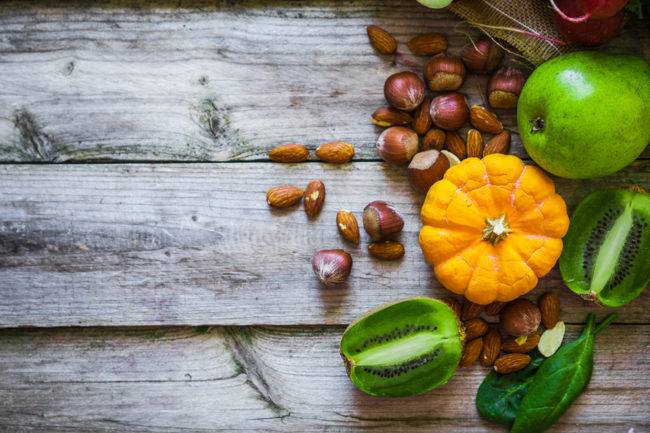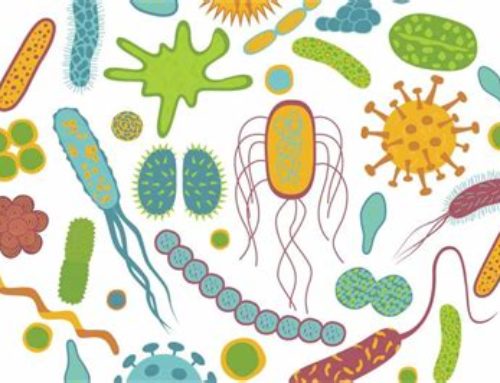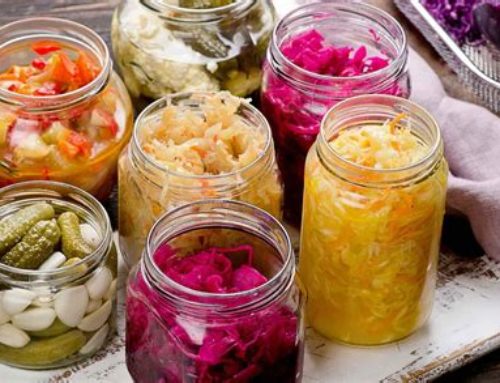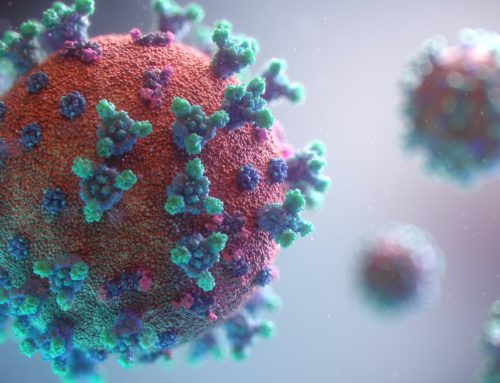Yes, we all get older – but what we eat makes all the difference to ageing gracefully and feeling fitter, healthier and better than ever, says Amina Eastham-Hillier.
The most effective anti-ageing foods contain vitamin and minerals that provide anti-inflammatory, antioxidant, anti-cancer, and liver-detoxifying properties. They also keep our DNA telomeres lengthened: telomeres naturally shorten as we get older, but nutrients like vitamin B12 and folate protect them. With their rich lode of nutrients, acai and goji berries, cacao and maca powder, chia seeds and flaxseeds are all classified as superfoods; but in the rush to try the latest thing, we undervalue many everyday foods that are equally rich in nutrients – and much less expensive.

Food as medicine
1.Aduki beans
Very popular in Japan, these small red-brown or purplish beans were introduced to the Western world in the 1960s through the then-popular Zen macrobiotic diet. Nutritionally, they contain one of the highest protein levels of any bean and are one of the easiest to digest. They’re an excellent source of fibre, folate and other B vitamins, and the minerals manganese, copper, zinc, and molybdenum (a trace mineral that stimulates an enzyme called sulphite oxidase, which is essential for liver detoxification). People with food sensitivities, inflammatory conditions or neurological diseases like Alzheimer’s may greatly benefit from molybdenum.
2.Asparagus
Its Ayurvedic name is shatavari, meaning “having 100 husbands”, and it is a top herb for treating female hormonal imbalances, low libido, gastrointestinal inflammation, fatigue, and fluid retention.
Asparagus is full of nutrients, such as silicon, calcium, iron, iodine, potassium, phosphorus and vitamins A, B, C, E and folate.
3.Beetroot and beet leaves
Beetroot is anti-inflammatory due to its rich betaine content. It also contains nitrates, which lower blood pressure when converted to nitric oxide. The betalin pigments aid the liver’s phase-two detoxification, and help cleanse the blood and the liver. Beetroot leaves are very high in minerals and vitamins, so add raw leaves to vegetable juices, or stir-fry with other greens.
4.Broccoli sprouts
An exceptionally rich source of enzymes that protect us against carcinogenic toxins. Sulphoraphane, a potent inducer of phase-two liver detoxification, is 10 to 100 times higher in broccoli sprouts than the mature plants. Broccoli is an excellent source of co-enzyme Q10, which is essential for energy metabolism and cardiovascular health.
5.Buckwheat
This is actually a seed rather than a grain, but can be used as a gluten-free grain alternative. Buckwheat is high in protein and studies show it benefits people with diabetes as it has a low GI, and can reduce blood sugar levels due to a constituent called chiro-inositol. Buckwheat is a good source of vitamin B12 and magnesium, and may help with energy metabolism, digestive health and cardiovascular health. The grain can be cooked and added to soups and casseroles, while the flour makes great pancakes.
6.Choko or chayote
Long a backyard fence staple, this pear-like gourd is used extensively in Mexican cuisine, but is greatly underestimated here, considered bland or tasteless. Cooked correctly with spices, perhaps in coconut-cream-based curries, the choko becomes a tasty and nourishing vegetable full of fibre, minerals, the antioxidants apigenin and luteolin, and folate. It can also be used in pickles, and pies.
7.Dragon fruit or pitaya
These beautiful pink and green fruits are rich in flavonoids and polyphenols with antioxidant properties against free radicals and toxins. Studies show the skin and flesh of dragon fruit inhibit melanoma cells, and support heart health by reducing cholesterol and high triglycerides. Dragon fruit also contains lycopene and vitamin C, while the seeds are a good source of omega-3 essential fatty acids, which makes it an excellent food for the skin and collagen.
8.Eggplant
Purple foods like eggplants contain enzymes called polyphenols that are extremely valuable for health and anti-ageing. Plants naturally form such compounds to protect themselves against fungi and bacteria. Animal studies suggest nasunin, an anthocyanin present in eggplant skin, is a powerful antioxidant that protects brain cell membranes from free radical damage. It also assists in the transport of nutrients into the cells and moving waste out. Anthocyanins – pigments responsible for the purple colour – inhibit neuroinflammation and facilitate blood flow to the brain, which helps guard against age-related mental disorders and improves memory. Chlorogenic acid in eggplant is one of the most potent free radical scavengers found in plant tissues, and this helps its anti-cancer properties work more effectively. It is also antibacterial, anti-cholesterol, and antiviral.
9.Gelatine
In times past – and in traditional cultures still – no part of an animal killed for food was wasted. Meat, bones, skin and connective tissue were all consumed in some way. Today, the ‘gross’ bits are usually binned, which means we no longer consume the gelatine. These bits contain the amino acids glycine and proline, which are responsible for the unique fibrous structure of collagen – the native form of gelatine. We need these amino acids, for without them our cellular ‘scaffolding’ begins to break down, leading to many physical signs of ageing. The best source of gelatine is bone broth, which can easily be made at home. Check out Amina’s recipe here.
10.Millet
This ancient gluten-free grain has been used for centuries worldwide, and it is a staple food for one-third of the world’s population. Millet is very nutritious, being particularly high in amino acids (nearly 15 percent protein), fibre, B vitamins (niacin, thiamine, riboflavin, choline and folic acid), vitamin C, and some vitamin E. The minerals iron, silicon, magnesium, potassium, boron, calcium, copper, manganese, molybdenum, phosphorus, selenium, and silicon are also present. Millet has a higher iron content than other grains, apart from amaranth, and is an excellent food for vegetarians.
Medicinally, millet is used for digestive symptoms, to ease painful joints and strengthen bone cartilage. Traditionally millet was applied as a warm poultice for sore joints and rheumatism.
11.Parsley
Even those without a garden can easily grow this abundant herb in pots. Parsley contains one of the highest levels of vitamin C present in any food, along with B vitamins, calcium, potassium, magnesium, manganese, iron, copper and iodine. An effective diuretic, it helps rid the body of excess fluid. It’s also a herbal carminative, which means it’s very soothing for the digestion, easing flatulence and colic. Parsley stimulates menstruation, but is not recommended during pregnancy as it can stimulate the womb.
12.Pomegranate
Claims about the anti-ageing properties of pomegranates have been made for some time, but until recently supporting evidence has been thin, although it is known that the fruit is high in vitamin C and fibre. However, an animal study from Ecole Polytechnique Fédérale de Lausanne, published in the Nature Medicine, discovered that a molecule in pomegranates, once transformed by microbes in the gut, enables muscle cells to protect themselves against one of the major causes of ageing. In nematodes and rodents, at least, the effect is nothing short of amazing, say the researchers. Human clinical trials are underway.
13.Pumpkin and pumpkin seeds
In traditional Chinese medicine terms, pumpkin is excellent for relieving damp conditions such as eczema, removing excess mucus from the lungs and bronchi in asthma, swelling, and dysentery, as well as aiding regulation of blood sugar levels, making it particularly useful for those with diabetes and hypoglycaemia. Cooked pumpkin destroys intestinal worms, but not as effectively as pumpkin seeds. The medicinal components in the seeds effectively ‘stun’ the worms, so for best results it’s beneficial to follow up with a natural laxative such as flaxseed oil. Pumpkin seeds (pepitas) are high in zinc and omega-3 essential fatty acids.
14.Rosemary
Recent studies in California and Japan show the carnosic acid in rosemary can protect the brain from free radical damage that causes stroke and Alzheimer’s disease. History tells us the ancient Greeks used rosemary for memory and would wear it in wreaths when studying for exams. As a naturopath, I use this herb regularly for ‘brain fog’ symptoms and to improve concentration, in addition to enhancing phase-two liver detoxification. Traces dating back as far as 500BC suggest it had been used to treat the nervous system. Current cancer studies indicate rosemary is a very useful antioxidant.
15.Sweet potato (okinawan)
Known better as the Hawaiian sweet potato here in Australia, this white-skinned, purple-fleshed superfood has been very popular in Japanese diets, including that of the Okinawans who are renowned for their longevity. All varieties of sweet potatoes are high in vitamin A, vitamin C and manganese, and a good source of copper, dietary fibre, vitamin B6, potassium and iron. Purple sweet potatoes have high levels of the antioxidant anthocyanin, a pigment responsible for the purple colour in this vegetable. Purple sweet potatoes contain 150 percent more antioxidants than blueberries. Anthocyanins have been epidemiologically associated with a reduced cancer risk.




Leave A Comment